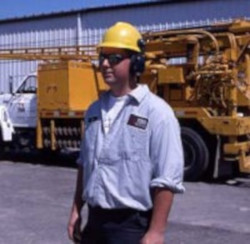Hearing Protection
Noise-induced hearing loss is the term for hearing damaged by exposure to excessive noise. The damage to hearing caused by too much noise may not be apparent for years.

Workers can damage hearing if they are continually exposed to noise greater than 85 decibels more than eight hours. As noise levels rise above 85 decibels, the safe exposure time for unprotected ears falls dramatically. For example, 110-decibel noise can impair hearing after just 15 minutes of exposure.
A qualified person should evaluate the hazards due to noise in the workplace using one of the following three methods:
- Area monitoring: A sound-level meter is used to identify areas in the workplace that may put workers' hearing at risk.
- Personal monitoring: A sound-level meter and a dosimeter is used to estimate an individual's daily noise exposure.
- Engineering survey: Noise levels produced by machinery in different operating modes is monitored to find ways to eliminate or control the noise.
Preformed or molded ear plugs should be individually fitted by a professional. Waxed cotton, foam or fiberglass wool earplugs are self-forming. Disposable earplugs should be used once and thrown away; non-disposable ones should be cleaned after each use for proper maintenance.
Knowledge Check Choose the best answer for the question.
3-6. Workers can damage hearing if they are continually exposed to noise greater than _____.
You forgot to answer the question!
